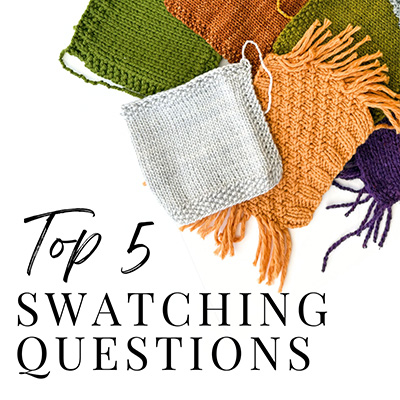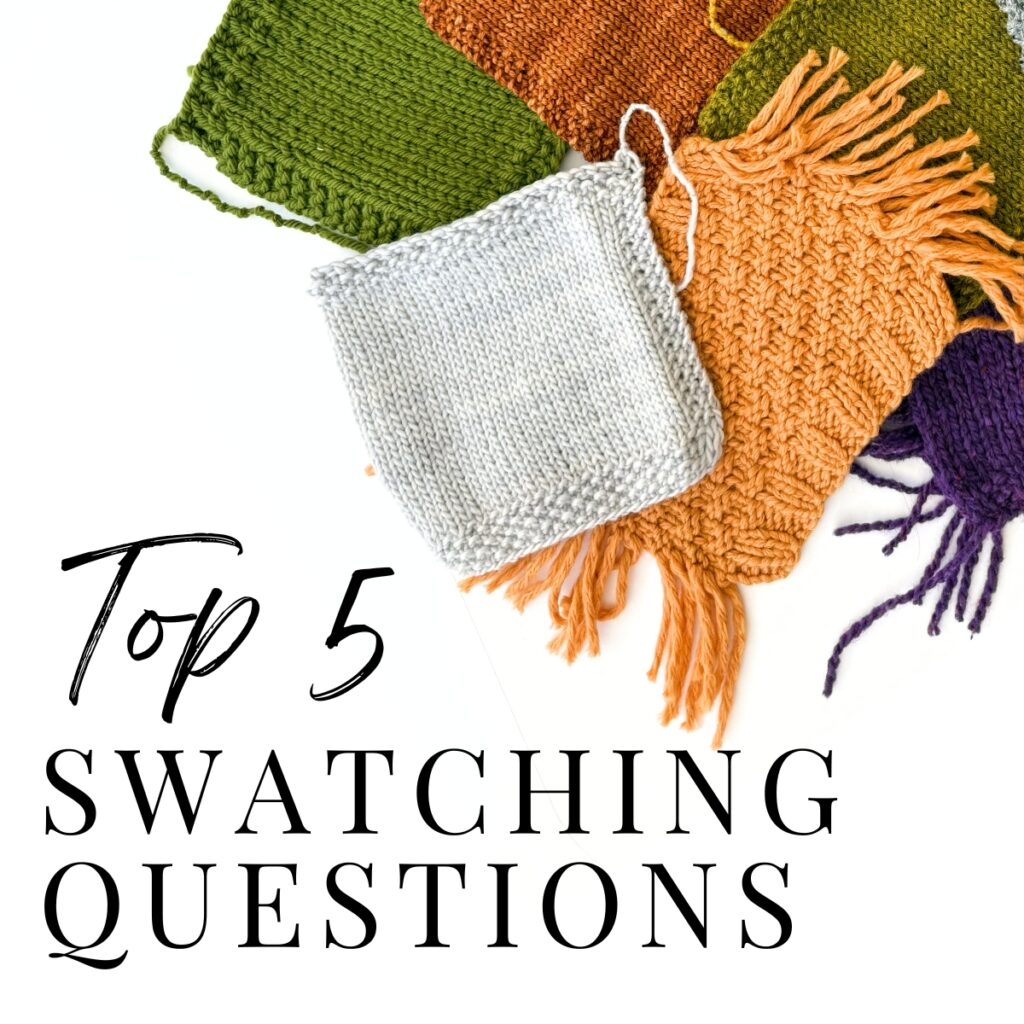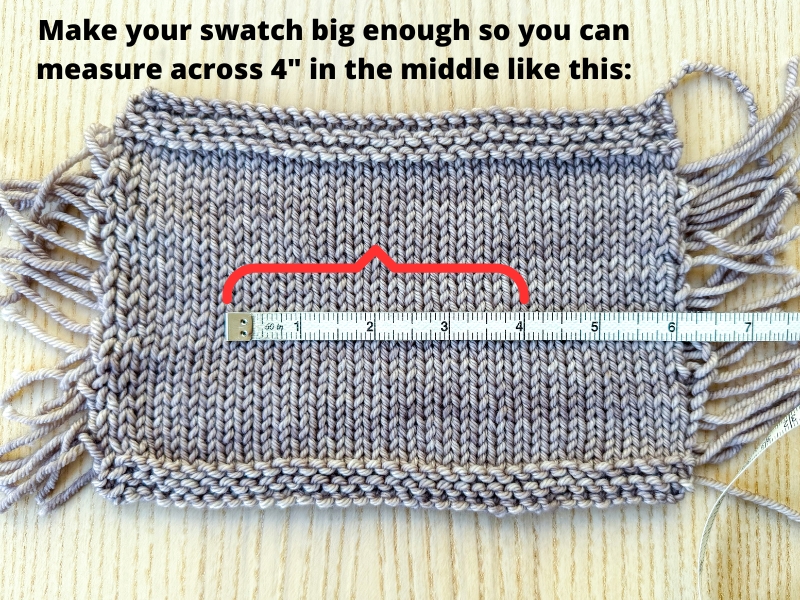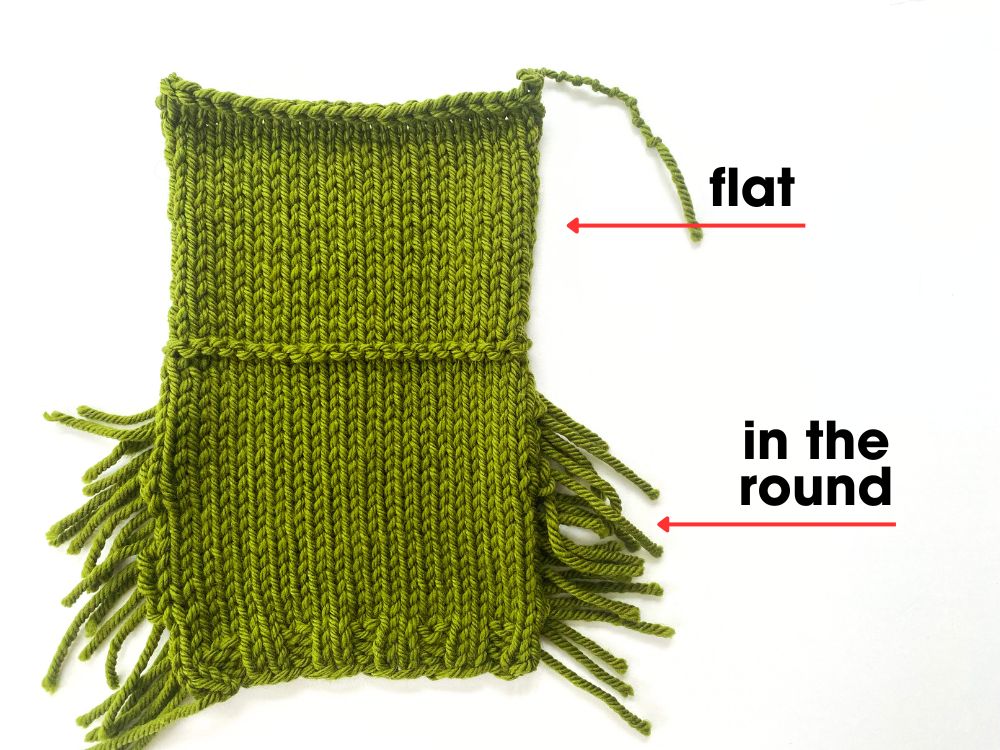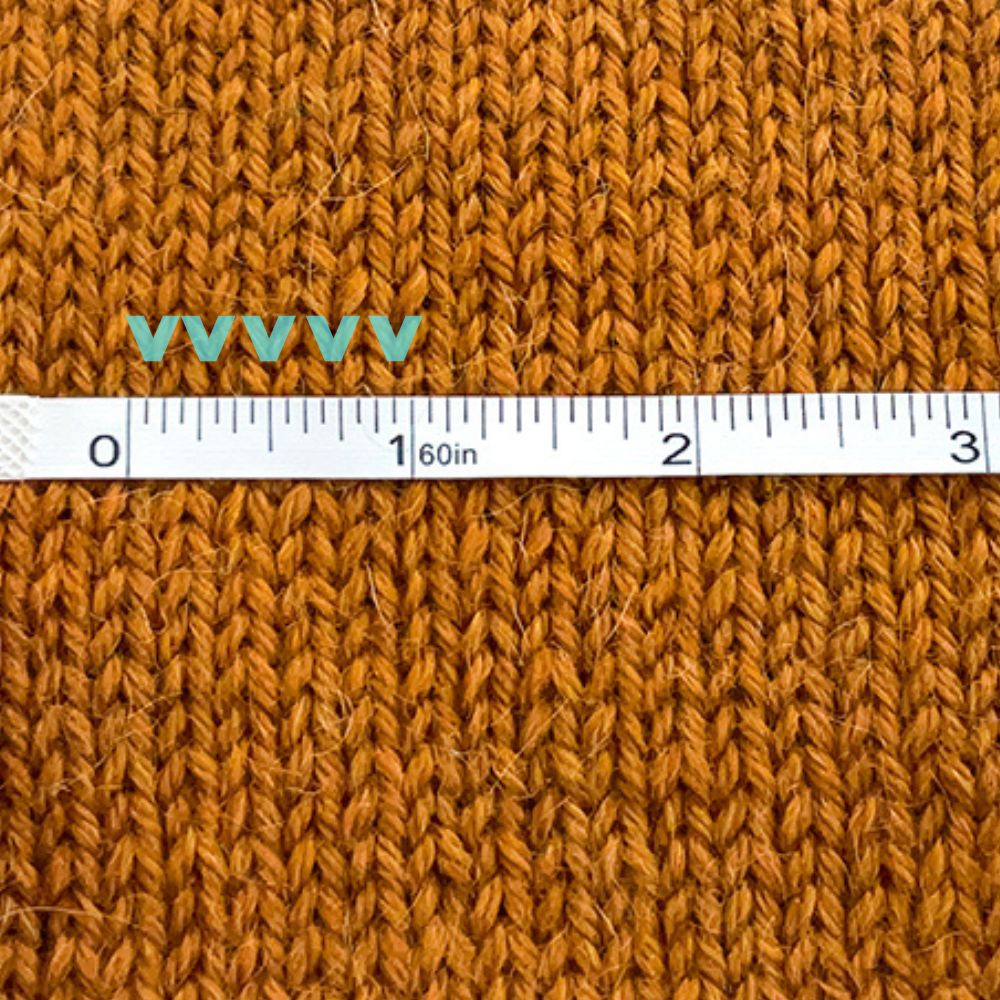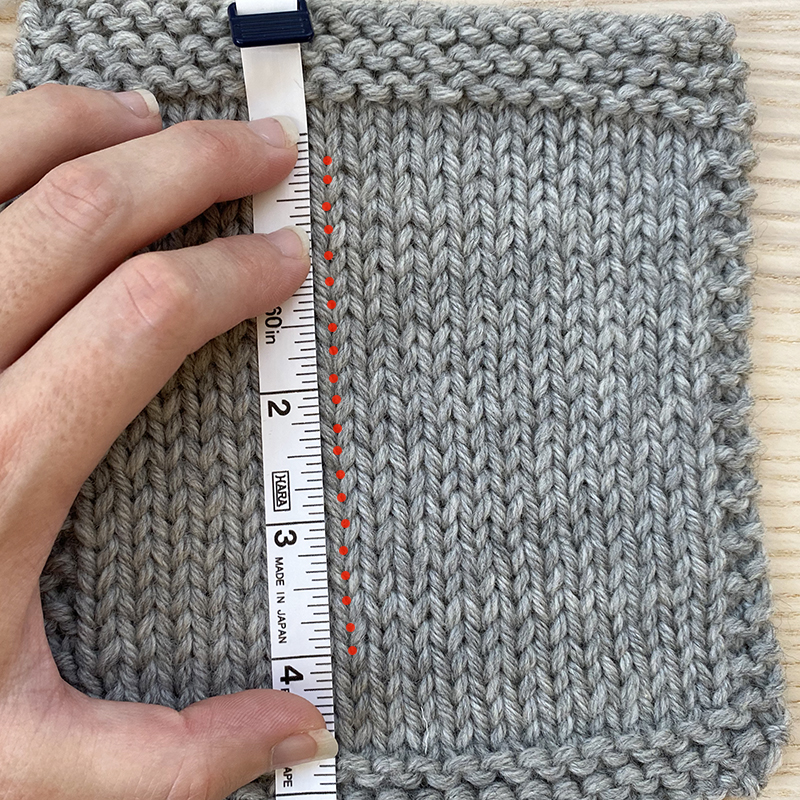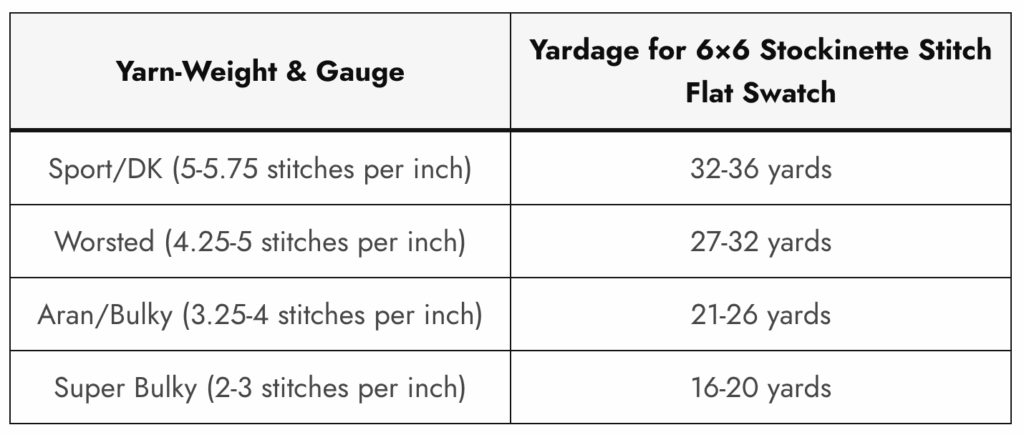Swatching is such an important part of our knitting process, but it’s also a topic full of questions. And it’s no wonder, because patterns don’t often provide details about how to swatch or swatching best practices (just that you definitely need to swatch!). So it’s no surprise that I often get lots of swatching questions. What are the most popular swatching questions I get? Learn all about them below!
Before I dive into them, if you are a more beginner knitter looking for the very basics about this topic (such as “what even is a gauge swatch?!), click here for my swatching 101 blog post.
Question #1: How big should my swatch be?
Although gauge is almost always listed over 4″, you want your swatch to be bigger than this so you can measure 4″ within the inside of your swatch, not including edges (since edges can have distorted stitches).
I usually tell my students to aim for a swatch that is 6-8″ wide and tall. How does this translate to number of stitches to cast-on? To get the minimum number of stitches to cast-on, take the number of stitches listed in the gauge (over 4″) and multiple that by 1.5. This will get you a swatch approx. 6″ wide (the minimum you should be aiming for). I find this typically works well for flat swatches. But for in-the-round swatches, the bigger the better because there can be distortion on the sides that is greater than 1″ (depending on the yarn). So for in-the-round swatches, a good guide may be to multiple it by 1.75 or 2 to get your cast-on amount.
Further Reading Links:
Question #2: Do I need to swatch in the round?
In the gauge area of your pattern, it should tell you not only the stitch pattern to use when swatching, but whether it’s knit flat or in the round. If it says it’s in the round, then your swatch should be too.
For my tutorial on how to swatch in the round, check out my video below:
Helpful Tip: If part of the design is knit in the round (such as the body), but part is knit flat (such as a yoke), then it can also be helpful to do a flat swatch as well in the needle size you got gauge with when swatching in the round. Why? Because then you’ll know if your gauge changes when working flat.
For many of us, our flat gauge is looser than our in the round (when working in stockinette stitch). If you swatch flat and learn that your gauge is different, then you can accomodate this by using a smaller needle when the pattern switches to working flat. Click here to read my blog post about this topic.
Question #3: Should I or shouldn’t I add trim to my swatch?
For flat swatches that are worked in stockinette stitch, there is the issue of rolled side edges. Without working some kind of trim, rolled edges are inevitable. So as a way to prevent this, many people will add a non-rolling trim such as Garter stitch to their edges. This helps the swatch to lay flat, making it easier to measure across.
However, there are different schools of thought on this question of whether to add a trim or not. Some people feel that adding a side trim could possibly distort your swatches’ stitches, due to the row gauge difference between stockinette stitch and garter stitch. And this distortion can then make your gauge measurement less accurate. But others feel that so long as the swatch is big enough, a little trim on the edges shouldn’t have a big impact.
Like so many things in knitting, neither answer is wrong and both are valid points. My personal take? I think it’s fine to add a side trim to flat swatches so long as you’re making a big enough swatch that allows you to measure only the inside fabric, with plenty of room (1″ at least) on either side. This way if there is any stitch distortion near the trim, it’s far from your measurement area.
And for in the round swatches, I find side trim to not be as useful and so I rarely add it.
Question #4: How do I count my stitches and rows?
This is a BIG question I get and so I’ve created several tutorials on the topic. Check out this blog post to learn more – it includes both photo and video lessons to show you exactly how to count.
Can’t see your stitches well? Check out my 5 tips for swatch stitch counting blog post.
Question #5: How much yarn do I need to swatch?
The answer to this question hasn’t always been straightforward because it can depend on different factors. For that reason, the industry standard has been to just add 10-15% extra yarn to a knitting pattern’s yardage requirements and this will typically allow for a swatch or two.
But I conducted a bit of a swatch study experiment last year (click here for the full blog post!) and based on my findings, here are approximate amounts depending on yarn-weight:
I hope reading my answers to these top 5 swatching questions has been helpful! Have other swatching questions? Feel free to reach out!

